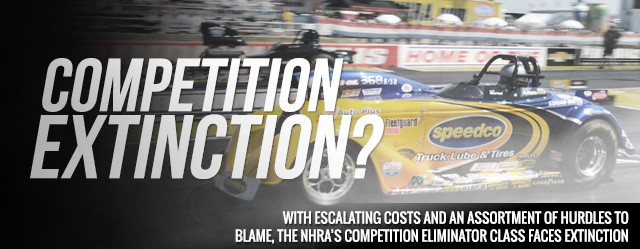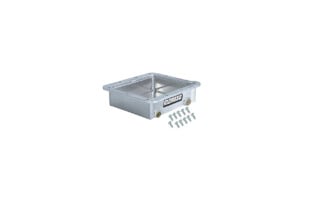When the NHRA brass met at the fall Las Vegas national event with racers from the anemic Competition Eliminator class, David Rampy, the category’s most decorated driver with 71 victories, piped up with a common-sense suggestion.
“They wanted input. And I said, ‘Why are you asking us? We’re here. You need to be asking the guy who’s not here and why he’s not coming,” Rampy said. “Don’t ask me. You need to talk to the people who are not coming and find out why they’re not here.”
Did the NHRA do that?
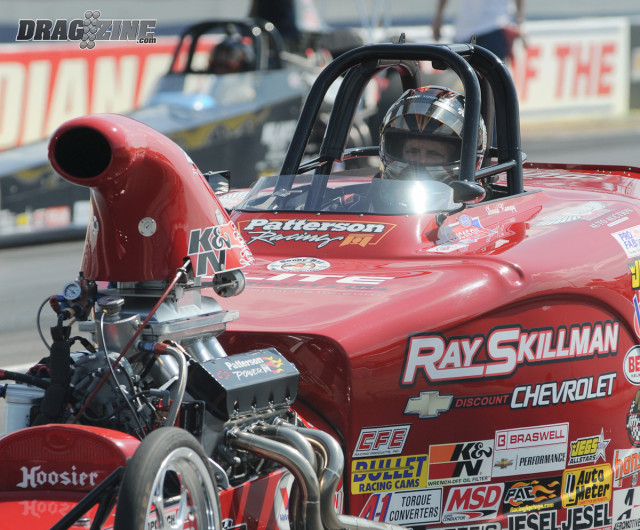
David Rampy, one of the most decorated sportsman racers in history, has two Competition Eliminator world championships to his credit, scoring the most recent title in 2014.
“Not that I know of, they didn’t,” Rampy said.
If they had, they might have heard a range of reasons, most of which could be traced to money. The sad joke is that the NHRA’s Competition Eliminator class is “a rich man’s class that’s running out of rich men.”
Is that a fair assessment?
Dan Fletcher, whose 90-plus overall victories include 16 in Comp Eliminator, said, “I think it probably is, frankly. It’s definitely not a class for the faint of wallet. There’s no doubt about that.”
Fletcher is licensed in every Lucas Oil Drag Racing Series category and primarily competes in the Stock and Super Stock classes, but he drives Rick Braun’s Comp car, most often in C/Econo Altered trim. Otherwise, he said, he couldn’t afford to do it.
“It’s something that I would never be able to do,” Fletcher said. “If I didn’t drive somebody else’s Comp Car, it’s certainly not anything I would ever even remotely dream of doing.”
NHRA, you never know – sometimes they’re like politicians: they talk out of both sides of their mouth. But they appear to be trying to do things to maybe help … – David Rampy
“Some people say, ‘It’s been rumored that’s Comp’s going to go away.’ You get some people saying, ‘Well, if they’re going to do away with Comp, then why would I want to get in a class they’re going to do away with?’ They [the NHRA] appear to be trying to do everything they can to keep the class around,” Rampy said. “NHRA, you never know – sometimes they’re like politicians: they talk out of both sides of their mouth. But they appear to be trying to do things to maybe help, although I don’t really feel like what they’re doing is helping. But they do appear to be trying to make things better.”
Whether the effort will be enough is the question. Fletcher isn’t optimistic: “Josh Peterson [NHRA vice-president of racing operations] seems to be trying to do what he can to hold onto the class. But you can’t ignore the elephant in the room. I hate to say it.
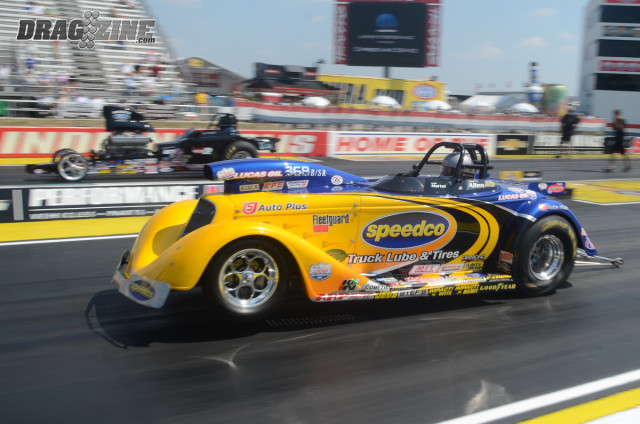 “Classes like Stock and Super Stock, you’ve got a lot of fans that really enjoy those classes. Comp, I’m not so sure about that,” he said. “Comp is pretty difficult for the average guy to understand. The average fan can watch a ’69 Camaro do a giant wheelstand – that’s popular. The average fan can watch a new COPO Camaro or a new Mustang that goes 8.50 or something and go, ‘Holy s—! My neighbor’s got one of those!’ Comp? There wouldn’t be that many people at the funeral, I’m afraid. Calling hours might have to be only one day.”
“Classes like Stock and Super Stock, you’ve got a lot of fans that really enjoy those classes. Comp, I’m not so sure about that,” he said. “Comp is pretty difficult for the average guy to understand. The average fan can watch a ’69 Camaro do a giant wheelstand – that’s popular. The average fan can watch a new COPO Camaro or a new Mustang that goes 8.50 or something and go, ‘Holy s—! My neighbor’s got one of those!’ Comp? There wouldn’t be that many people at the funeral, I’m afraid. Calling hours might have to be only one day.”
Like Rampy, Fletcher acknowledged the NHRA’s interest in the class.
“I know that NHRA doesn’t want to s—can the class. I know they would like to see it flourish, but you can’t ignore numbers. The car count is way, way down. They’ve changed the rules this off-season and hope to spur interest and participation. I’m not really sure it’s going to work. I really don’t know what the answer is. It might just be something that’s come and gone.”
Classes like Stock and Super Stock, you’ve got a lot of fans that really enjoy those classes. Comp, I’m not so sure about that. – Dan Fletcher
“I think they want it to work. You hate to be the one to put down a dream or an icon of the sport. It’s Comp Eliminator. It’s a deep-rooted fabric of NHRA racing. Even the [current leaders] realize that and know that it was Wally’s class,” Fletcher said. “NHRA has gone above and beyond the call of duty in keeping the class afloat as long as they have. Any reasonable person could have taken it off life support a couple of years ago.”
Car counts are embarrassingly low. Contingency money has decreased by about 50 percent. Racers have asked for qualifying payouts to return but got only rocks in their stockings. It’s harder to be competitive and make a decent dollar. Top Sportsman and Top Dragster came along and perhaps looked sexier. And finally, the nature of the Comp class just might be working against it.
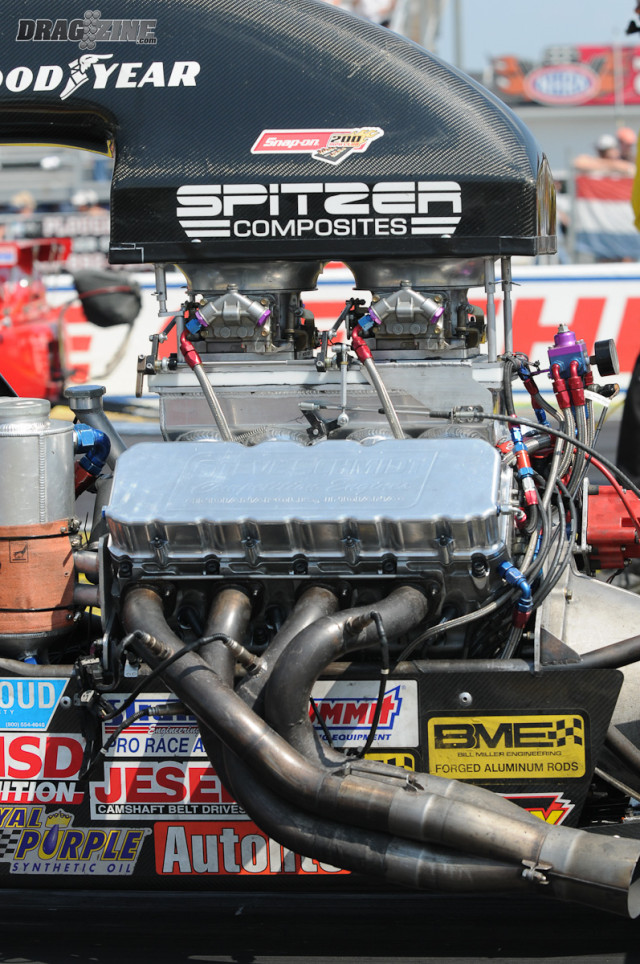
One of the cited reasons for the downfall of Competition Eliminator is the cost of entry and renaming competitive. Fletcher and Rampy estimate the figure in the $60,000-70,000 range for a good engine.
Fletcher defended it, saying it welcomes “everything from a four-cylinder bantam altered to a 500-inch Pro Stock with an automatic. It’s got everything you could dream of. It’s a very impressive class. It really is. But when only 17 of the guys show up, it’s hard. If guys don’t get out and support the class this year, I think you’re looking at the swan song.”
He, too, made a reasonable suggestion.
“What would make everyone happy, from the racers to NHRA, is if we could just get 10 more cars a race. If you could just get 25-30 cars a race – a lot of [fields] are 15-20 … You wouldn’t think it should take that much to get 10 more cars a race,” Fletcher said.
Rampy said car counts are dwindling in every class. “I ran Pro Stock in’93 and ’94, and we were having 30-some cars show up. Now you’re lucky to have 16 cars show up.” But he said “most of the time” Comp can’t fill its 32-car field. Moreover, he said, it’s not attracting twentysomething newcomers, “not at all.” Aside from Adam Bowdish, Justin Lamb, maybe a couple of other racers, Rampy, 60, put the average age of the class’ competitors around 50.
There’s cars out there. There’s guy that aren’t racing, for whatever the reasons are. Let’s face it – ultimately, the reason is going to be money. – Dan Fletcher
Said Rampy, “Money is definitely some of the problem. We’ve priced ourselves out of business, to a degree.” He said many classes are expensive, but said a ballpark figure for a Comp motor is about $70,000. “Some are higher and some lower,” he said.
Fletcher said his father used to build his own motors in the family garage. “You could do that. When my dad ran Modified Production when I was a kid, he could build his own motor and be competitive. That’s probably not the case anymore,” he said. “The motor in a Comp car is probably $60,000, something ridiculous like that. It might be more. It’s absurd to go out and pay a $320 entry fee for a $2,000-to-win purse. You’ve got to do it because you love to and want to. Certainly someone of my financial position isn’t in any way, shape, or form in a position to do that.
“There are still guys in Stock and Super Stock that build their own motors. But for the most part, there’s a handful of really good-quality engine builders people use, and that’s the way it is. If you have an oddball combination, some guys might do their own stuff there. But the time, the expense, the dedication, what it would take to ferret out an odd combination and bring it to fruition and optimize the performance, it’s labor-intensive, financially strapping, and daunting. Clearly, there are not enough guys that want to devote their entire life,” Fletcher said.
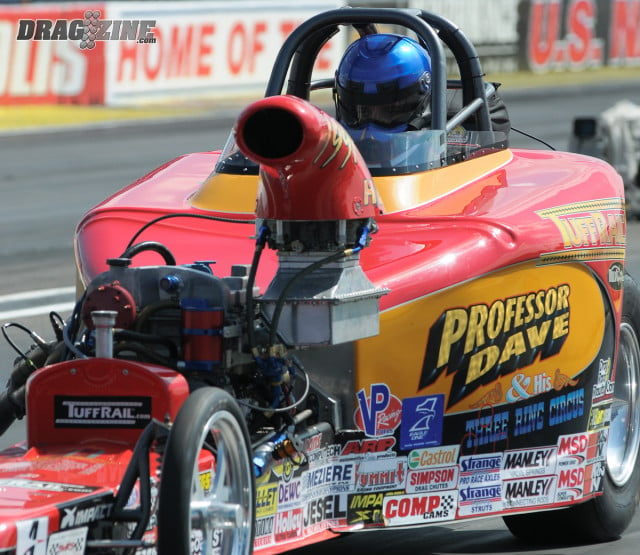
Comp is inarguably the most diverse class in all of drag racing, with everything from monster cubic-inch Pro Modified cars, to inline four- and six-cylinders and everything in between.
Rampy understood. “I hate to say this,” he said, “but I think part of the problem is typical America. People don’t want to work. Comp is not a show up, put a dial-in on, and go racing. It’s work. You’ve got to work and try to make your car faster. There’s a lot to it. The generation coming along now doesn’t want to work that hard. They don’t. They want somebody to give it to them, and Comp is not the class for that. You have people who say, ‘Well, I don’t want to do that – that’s too much work.’ I understand that – it ain’t for everybody. I think the generation is part of the problem, too.”
Both can remember when the return on investment in running in the Comp class was stronger.
“At one time, it was a little bit easier to win in. I felt like there was the trade-off. You could win more often in Comp if you had good equipment, a good combination, and you were a decent driver. There were performance advantages there,” Rampy said. He said he minimizes costs today by operating on a budget.
For Fletcher, it’s a dollars-and-sense approach.
It used to be OK. I used to be able to win the better part of $20,000 when I won a national event. Now, unfortunately, with the loss of contingency, when I win a race now, if I can make 12-grand it’s a lot. – Dan Fletcher
Today, it barely pencils out, with the expense of the race car itself coupled with travel expenses and entry fees. “It’s not a cheap endeavor. It has to be your golf game. You have to be a wealthy guy,” Fletcher said. “This can’t be my golf game. I have to be able to win when I go there. Even before I raced for a living, when I was a young man, I still didn’t have money to just throw away at this deal. I had to win.”
Rampy said, “It’s gone backwards. The reason we get paid less now is because we have less contingency sponsors. I do realize everybody was affected by the economy.”
And Fletcher noticed that “[NHRA’s] Jill McKenna has taken over the contingency program, and she’s doing everything she can in her human power to try to get sponsors back to the sport. But companies certainly don’t have the disposable advertising income they used to have. I used to have 60 decals on the car. That’s 300 bucks a whack – 18-grand. [Today] I’ve got 30 stickers, maybe. It’s just pathetic. It’s terrible.”
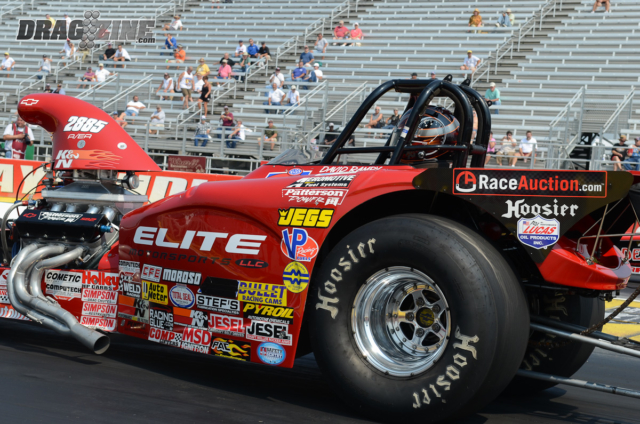
With a diminishing number of contingency sponsors participating in the sport, the total payout for performing well at an NHRA national or divisional event has fallen sharply, leading some to simply park their race cars or exit the sport entirely.
Racers continue to lobby for qualifying money again, Rampy said.
“You could go to the races and qualify, and as long as you qualified you would still get maybe $300. When they took that money from us, it appeared to me that hurt the low-buck guy. You’re still getting the guy that’s good and fast and capable of winning. But the guys that weren’t as fast and kind of at the bottom of the field knew they could come and if they qualified they get that $300 or so – and if they got lucky and won a round or two they’d get a little bit more. But when they took that away, all those guys just quit coming back.”
NHRA blames it on the contingency people, and the contingency people blame it on NHRA. David Rampy
Said Fletcher, “Qualifying money would be good, but it’s not there now. You used to get money to win class. You could make almost $1,500 winning class. Those days are gone. The good old days have come and gone, I’m afraid.”
Rampy still thinks, he said, that the qualifying money is a key: “We’ve said that over and over again that if they bring that back that that would help, but NHRA just seems to ignore that. They seem to not do anything about it. They ignore what we’re saying to them.”
This winter the NHRA changed some rules, gave each racer a tenth back on his index and introduced the ‘personal index’ concept. Fletcher said he sees no significance in the former but applauds the latter.
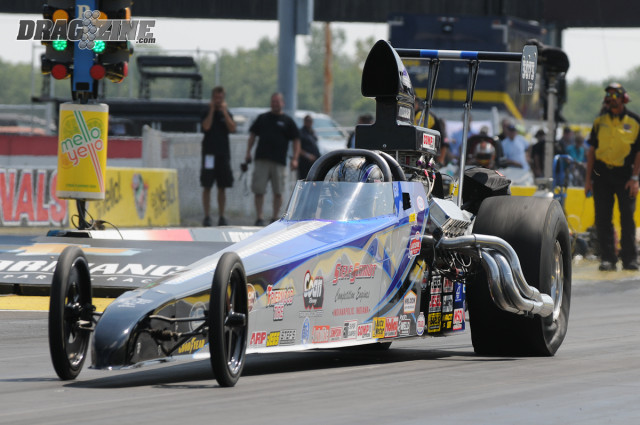 “Last year in C/Econo Altered, my index was 8.60. Now my index is 8.70. They think that they’re going to try and spur participation. I was competitive. He said he was happy running, for example, .62-seconds under his index. “But if you were a .45-under car, you’ve got no chance to win the race. Well, now that .45-under is .55-under car,” he said. “So it made him faster, but everyone else is faster, too. So what did it really accomplish?”
“Last year in C/Econo Altered, my index was 8.60. Now my index is 8.70. They think that they’re going to try and spur participation. I was competitive. He said he was happy running, for example, .62-seconds under his index. “But if you were a .45-under car, you’ve got no chance to win the race. Well, now that .45-under is .55-under car,” he said. “So it made him faster, but everyone else is faster, too. So what did it really accomplish?”
Fletcher defended the personal index idea for the fact it doesn’t unfairly skew the game for other racers who previously would have lost out by default. By today’s rule, a driver could hurt his own index, for himself, but that wouldn’t affect other drivers in that same class.
For example, Fletcher said, “If I went .62 under in C/EA, then I trim the index a hundred. It goes from 8.60 to 8.59. Well, now if you’ve got a C/EA car and you’re sitting in South Carolina and I go out in C/EA in Pomona, California, and hit it, I only hurt it for myself. I don’t hurt it for you. That’s not a bad thing.” Under previous conditions, he said a racer could “be sitting in South Carolina or Kansas, where the air is never good and you don’t get to race until the middle of the year, and some other guy’s in Gainesville, Florida, where it’s a mineshaft, [and] he just buries your index and takes your car and makes it uncompetitive, just puts you out of business. It’s happened to guys for years. And it’s just been, ‘Well, that’s the class. That’s the way it is. Work harder. Spend more money.’ That’s kind of horses— for me.
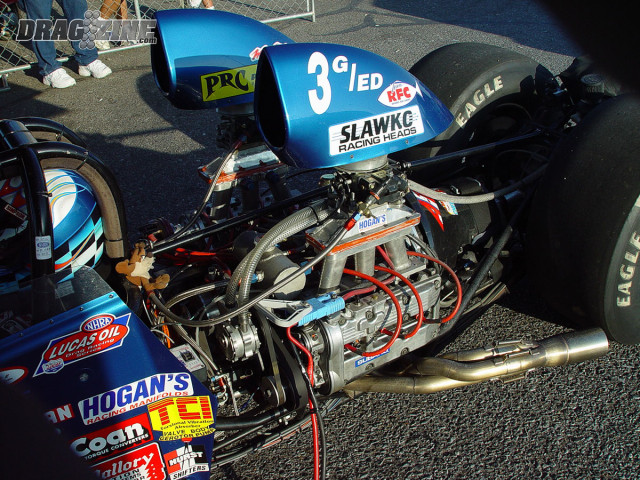 “I think the personal index is a good thing. I think NHRA made a good decision. I really do think that’s a move in the right direction,” he said. “Giving everyone a tenth back, I’m not so sure that’s going to change a hell of a lot. I don’t know – maybe it’ll get guys in their cars that are sitting in their garages. I hope it does.”
“I think the personal index is a good thing. I think NHRA made a good decision. I really do think that’s a move in the right direction,” he said. “Giving everyone a tenth back, I’m not so sure that’s going to change a hell of a lot. I don’t know – maybe it’ll get guys in their cars that are sitting in their garages. I hope it does.”
Rampy said he’ll be watching even more closely this year, because “we blamed a lot of this on the fuel prices. Now the fuel price is not an issue, so we’ll see when we start the season what transpires.”
Competition Eliminator racers and fans hope that what transpires does not mean the class expires.



